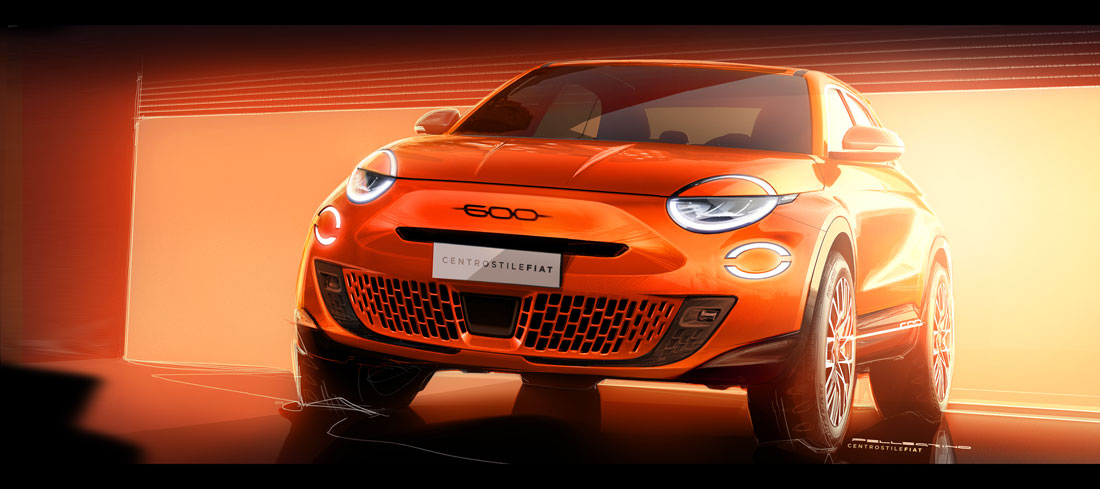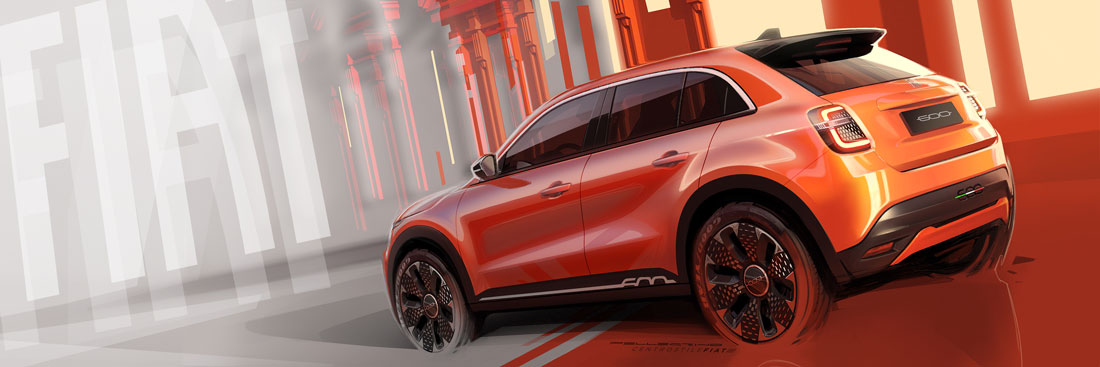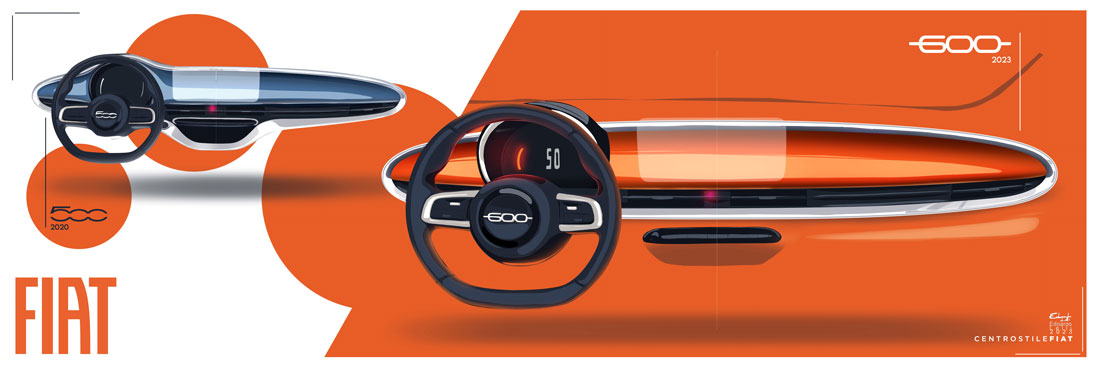Create a completely new model where only the name is a legend. For the new 600, reborn as a crossover 68 years after the debut of the original signed off by Dante Giacosa, the Fiat design team led by Francois Leboine faced a major challenge. They had to design from scratch a model that would bear a mythical name: “the 600”, says Leboine, whom we met at the Fiat style centre in Turin. The project took off in 2020 amidst the thousand challenges of the pandemic: “The topic was clear from day one”, continued Alberto Dilillo, head of exterior design at Fiat, “to create a compact electric SUV (in some markets it will also come in a mild hybrid version, ed.) recalling the legendary 600 in its details, but with a highly innovative spirit.
Relative of the electric 500
Indeed, the Fiat 600 tells a story that speaks to the future while paying homage to the past. The e-CMP platform shared with the Stellantis group has not limited the creativity of the designers, who succeeded in creating a crossover similar in form to the “500 family” while marking it out from its cousin, the Jeep Avenger. “The rounded volumes, soft surfaces and gentle shapes connect the 600 with the electric 500. The references are clear, but we didn’t want to stop at a mere resemblance: our aim was to avoid the 600 being perceived as the 500’s big sister”, explains Leboine. And so if the rounded headlights with the upper part integrated into the bonnet are a clear citation of the legendary Turin city car, the roof line at the rear came under close scrutiny to achieve the same rounded shape seen on Dante Giacosa’s 600.
Longer, more proportionate
“A year into the project we were not fully satisfied with the solution found for the rear. The roundness of all the other volumes did not quite match the shape of the rear: we needed more space to achieve what we had in mind”, explained Dilillo. And so 50 millimetres more length was enough to complete the project: “Sufficient to make a C-pillar echoing that of the original 600, creating a link with history and at the same time giving the car sleeker proportions”.
Fiat DNA
Developing the rear was not the only point at issue. While the first styling models featured a front end with completely full volumes, the final solution included a concave surface recalling the “omega” typical of the front of the 1957 500. “It gives the 600 more road presence and a more assertive look. For the same reason we broadened the tracks and made the wing profiles more prominent. The result is an athletic crossover that has no reference genres, is like no other and is cool”, continues Leboine.
Farewell to grey
Athletic yes, but not sporty, which is why some character lines have been cleverly camouflaged: “That is why we decided to hide the spoiler using the black colour”, explains Dilillo. The 600 also marks a turning point for Fiat in terms of colour: “With this model we are saying goodbye to grey, a colour that we will no longer see on our cars from now on”, explains Edoardo Spolitu, head of Color&Trim for the Fiat 600, which is available in seven colours: orange, sandy, light blue, sea green, black, white and red.
Interior inspired by the ancestor
The same connection with the brand’s heritage can be found in the interior, as Michele Longo, head of interior design for Fiat and Abarth, tells us: “The upper part of the dashboard recalls the 500 world, as do the air conditioning vents, the 10.25-inch floating display positioned in the centre and the two-spoke steering wheel. For the digital instrumentation (7 inches), on the other hand, we followed the layout of the original 600 with the cluster not completely incorporated into the dashboard”. A reinterpretation of the past in a contemporary key can also be found in the seats: “The 600 logo stitched into the backrest links it to history, while the use of fabrics from recycled PET projects it into the future”, concludes Edoardo Spolitu.
(Full article in A&D no. 262)
















